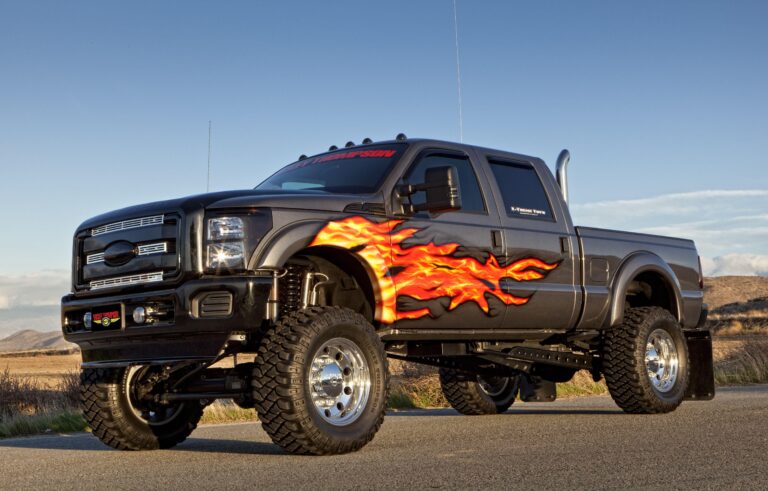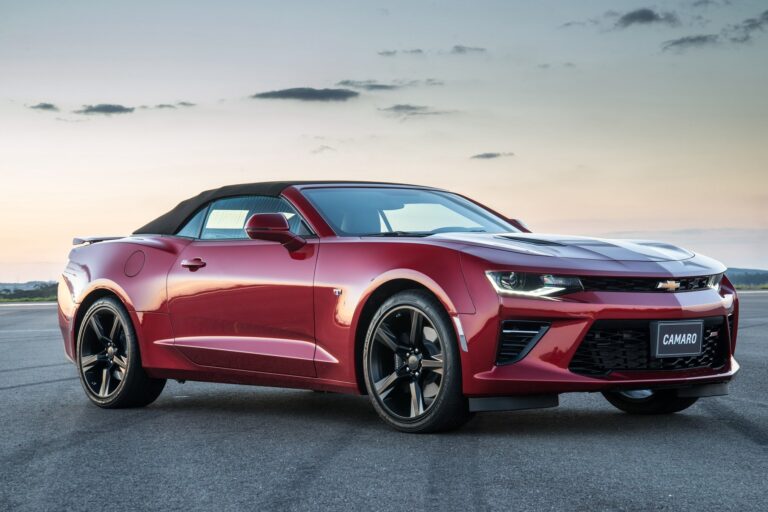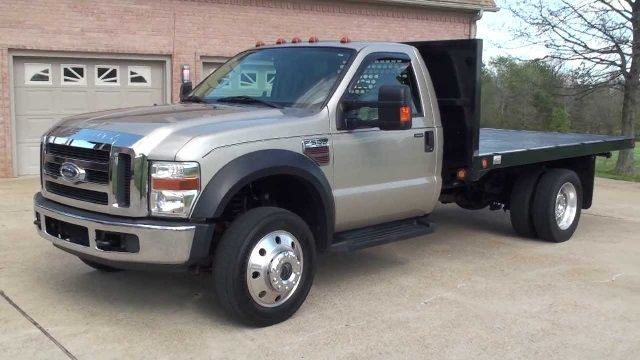Used Ford 2500 Trucks For Sale: Your Comprehensive Buying Guide
Used Ford 2500 Trucks For Sale: Your Comprehensive Buying Guide cars.truckstrend.com
In the world of heavy-duty pickups, the name "Ford F-250" stands as a titan, synonymous with power, durability, and unwavering capability. While Ford officially designates its 3/4-ton truck as the F-250 Super Duty, it’s not uncommon to hear it colloquially referred to as a "Ford 2500," a nod to the nomenclature used by some competitors for their similar class of vehicles. Regardless of how you say it, a used Ford F-250 represents an exceptional value proposition for individuals and businesses alike who demand serious towing, hauling, and off-road prowess without the hefty price tag of a brand-new model.
This comprehensive guide is designed to navigate you through the intricate process of purchasing a used Ford F-250, equipping you with the knowledge and insights necessary to make an informed decision. From understanding its robust legacy and diverse engine options to mastering the art of inspection and negotiation, we’ll cover every crucial aspect to help you find the perfect heavy-duty truck that meets your needs and budget.
Used Ford 2500 Trucks For Sale: Your Comprehensive Buying Guide
Understanding the Ford F-250: A Legacy of Power and Reliability
The Ford F-Series Super Duty line, introduced in 1999, marked a significant departure from the lighter-duty F-150, engineered specifically for the most demanding tasks. The F-250, as the entry point into this heavy-duty segment, quickly established itself as a workhorse of choice for contractors, ranchers, recreational vehicle owners, and anyone requiring substantial towing and payload capacities.
What sets the F-250 apart is its robust frame, heavy-duty suspension, and a range of powerful engine options designed to handle immense loads. Unlike many passenger vehicles, F-250s are built with longevity in mind, often capable of accumulating hundreds of thousands of miles when properly maintained. This inherent durability is a primary reason why a used F-250 remains a highly sought-after asset in the pre-owned market.
Key Generations and Engine Options: What to Look For
Over its production history, the F-250 has seen several significant redesigns, each bringing advancements in technology, comfort, and, crucially, powertrain options. Understanding these generations and their respective engines is paramount when considering a used model.
Key Generations:

- 1st Generation (1999-2007): The original Super Duty, known for its rugged, no-nonsense design.
- 2nd Generation (2008-2010): Introduced a bolder front fascia and updated interiors.
- 3rd Generation (2011-2016): Saw significant powertrain upgrades, particularly in the diesel engine.
- 4th Generation (2017-2022): Switched to an aluminum body (cab and bed) on a stronger steel frame, improving fuel economy and payload/towing capacities.
- 5th Generation (2023-Present): Further refinements in technology, capability, and styling.
Engine Spotlight:
The engine is the heart of any heavy-duty truck, and the F-250 has offered a range of formidable powerplants:
-
Gasoline Engines:
- 5.4L Triton V8 (1999-2010): A dependable workhorse for lighter duty, though can feel underpowered for heavy towing. Generally less complex and cheaper to maintain.
- 6.8L Triton V10 (1999-2016): A popular choice for those needing more power than the 5.4L but not the diesel. Known for its smooth power delivery and decent reliability, though fuel economy is a major consideration.
- 6.2L Boss V8 (2011-2022): A significant upgrade, offering more horsepower and torque. A solid, reliable gas engine for general heavy-duty use.
- 7.3L "Godzilla" V8 (2020-Present): Ford’s latest gas engine, designed for heavy-duty applications. Offers impressive torque and horsepower, often considered a great alternative to diesel for many users due to lower upfront cost and maintenance.
-
Diesel Engines (Power Stroke): These are often the holy grail for heavy-duty truck buyers due to their immense torque, towing capacity, and fuel efficiency (relative to gas engines in heavy use). However, they come with higher maintenance costs and potential for specific issues.
- 7.3L Power Stroke V8 (1999-2003): Renowned for its legendary reliability and longevity. A highly sought-after engine in the used market, though it’s older and might lack modern power.
- 6.0L Power Stroke V8 (2003.5-2007): Known for significant reliability issues (e.g., EGR cooler, head gaskets, oil cooler). Buyer beware: If considering a 6.0L, ensure it has been "bulletproofed" (common aftermarket fixes) or thoroughly inspected by a diesel mechanic.
- 6.4L Power Stroke V8 (2008-2010): Offered more power than the 6.0L but also faced reliability challenges, particularly with the exhaust system and fuel system. Often considered less desirable than the 6.7L or 7.3L.
- 6.7L Power Stroke V8 (2011-Present): A major leap forward in diesel technology for Ford. Generally considered much more reliable than its predecessors, offering incredible power and efficiency. Earlier models (2011-2014) had some initial issues (turbo, injector problems) but were largely resolved in subsequent years.
Trim Levels and Features: Finding Your Perfect Match
Ford F-250s are available in a range of trim levels, from basic work trucks to luxurious cruisers:
- XL: The base work truck. Manual windows/locks, vinyl seats. Ideal for pure utility.
- XLT: Adds power windows/locks, cruise control, cloth seats, and basic infotainment. A popular choice for a balance of features and affordability.
- Lariat: Introduces leather seating, larger infotainment screen, premium audio, and more creature comforts.
- King Ranch/Platinum/Limited: Top-tier trims offering luxurious interiors, advanced safety features, specialized styling, and all available amenities.
Consider your primary use case. Do you need a bare-bones hauler, or will this be a daily driver that also tackles heavy jobs? Also, pay attention to cab configurations (Regular Cab, SuperCab, Crew Cab) and bed lengths (short or long bed) to ensure it fits your lifestyle.
The Benefits of Buying a Used F-250
Opting for a used Ford F-250 offers several compelling advantages:
- Significant Cost Savings: Trucks, especially heavy-duty ones, depreciate rapidly in their initial years. Buying used means letting someone else take the biggest depreciation hit.
- Proven Reliability: With a strong track record, well-maintained F-250s are known to last for hundreds of thousands of miles, offering long-term dependability.
- Wide Availability: The F-250 is one of the best-selling trucks, ensuring a vast inventory of used models across various model years, trims, and engine types.
- Strong Resale Value: Ford Super Duty trucks hold their value well, meaning your investment will likely retain a good portion of its worth if you decide to sell it later.
- Established Aftermarket: A huge ecosystem of parts, accessories, and performance upgrades is available for F-250s, making customization and repairs easier.
Essential Considerations Before You Buy: A Buyer’s Checklist
Purchasing a used heavy-duty truck requires meticulous attention to detail. Follow this checklist to mitigate risks:
- Define Your Budget: Beyond the purchase price, factor in insurance, potential maintenance (especially for older diesels), and fuel costs. Heavy-duty trucks consume more fuel and have higher insurance premiums.
- Intended Use: Be realistic about your needs. How much will you tow? What payload do you require? This will dictate the necessary engine, transmission, and perhaps axle ratio.
- Vehicle History Report (VHR): A CarFax or AutoCheck report is non-negotiable. It reveals accident history, previous owners, service records, odometer discrepancies, and title issues (e.g., salvage, flood).
- Pre-Purchase Inspection (PPI): This is the single most important step, especially for diesel trucks. Have a trusted, independent mechanic (preferably one specializing in diesel or heavy-duty trucks) perform a thorough inspection. They should check:
- Frame & Suspension: Look for rust, bends, cracks, worn bushings, and shocks.
- Engine: Check for leaks, unusual noises, smoke from the exhaust, proper fluid levels, and diagnostic trouble codes (DTCs). For diesels, specifically check injectors, turbocharger, EGR system, and high-pressure oil pump (HPOP).
- Transmission: Smooth shifts, no slipping, proper fluid color/smell.
- Drivetrain: Check U-joints, differentials, and 4×4 system engagement.
- Brakes: Pad thickness, rotor condition, fluid leaks.
- Tires: Tread depth, uneven wear (indicating alignment issues).
- Electrical: All lights, gauges, power accessories, and HVAC system.
- Rust Inspection: Pay close attention to the frame, rocker panels, cab corners, and bed mounts, especially if the truck comes from a region that uses road salt. Surface rust is manageable; frame rot is a deal-breaker.
- Aftermarket Modifications: While some modifications (e.g., quality lift kits, upgraded headlights) can be beneficial, poorly installed or extreme modifications (e.g., oversized turbos, deleted emissions systems without proper tuning) can indicate hard use, potential reliability issues, or even legal problems.
- Test Drive: Drive the truck extensively. Listen for unusual noises, feel for vibrations, test acceleration, braking, and steering. If possible, test it with a load or trailer to simulate your intended use.
Where to Find Used Ford F-250s for Sale
- Dealerships: Ford dealerships often offer Certified Pre-Owned (CPO) F-250s, which come with a warranty and multi-point inspection, though at a higher price. Independent used car lots also carry a wide selection.
- Private Sellers: Websites like Craigslist, Facebook Marketplace, and dedicated truck forums are excellent sources. Prices can be lower, but the buyer assumes more risk and responsibility for inspections.
- Online Marketplaces: Autotrader, Cars.com, and eBay Motors list vehicles from both dealerships and private sellers, offering a vast inventory.
- Auctions: Government or public auctions can offer low prices but typically involve "as-is" sales with no warranties and limited inspection opportunities.
Negotiation Tips and Closing the Deal
- Research Market Value: Use sites like Kelley Blue Book (KBB.com) or Edmunds.com to determine a fair price range for the specific year, mileage, and condition of the truck you’re interested in.
- Leverage PPI Findings: If the inspection reveals necessary repairs, use these as leverage to negotiate a lower price or ask the seller to address them.
- Be Prepared to Walk Away: Don’t feel pressured. There are many F-250s on the market.
- Paperwork: Ensure you receive a clear title, a bill of sale, and any service records. Understand your state’s requirements for sales tax, registration, and title transfer.
Estimated Used Ford F-250 Price Ranges (Illustrative)
Note: Prices are highly variable based on condition, mileage, trim level, engine type, region, and market demand. This table provides a general estimation for "Ford F-250" (often colloquially referred to as "Ford 2500" in the heavy-duty truck segment).
| Model Year Range | Trim Level (Common) | Engine Type (Key) | Estimated Price Range (USD) | Key Notes / Considerations |
|---|---|---|---|---|
| 1999-2007 | XL, XLT, Lariat | 7.3L Diesel, 6.0L Diesel, 5.4L Gas, 6.8L Gas | $8,000 – $25,000 | 7.3L Diesel: Highly sought-after, premium price for condition. 6.0L Diesel: Cheaper, but inspect for "bulletproofing". Gas models are more affordable. |
| 2008-2010 | XL, XLT, Lariat | 6.4L Diesel, 6.8L Gas | $12,000 – $30,000 | 6.4L Diesel: Can be problematic, thorough inspection crucial. Gas models offer reliability at a lower cost. |
| 2011-2016 | XL, XLT, Lariat, King Ranch | 6.7L Diesel, 6.2L Gas | $20,000 – $45,000 | 6.7L Diesel: More reliable than previous diesels, but early years (2011-2014) had some initial issues. 6.2L Gas: Solid, reliable gas option. |
| 2017-2022 | XLT, Lariat, Platinum, King Ranch, Limited | 6.7L Diesel, 6.2L Gas, 7.3L Gas | $35,000 – $70,000+ | Aluminum body brings weight savings. Higher price points for lower mileage, higher trims, and the desirable 6.7L diesel/7.3L gas. |
| 2023+ | All Trims | 6.7L Diesel, 6.8L Gas, 7.3L Gas | $60,000 – $90,000+ | Latest generation, still considered "late model used." Prices will be closer to new, but still offer savings. |
Frequently Asked Questions (FAQ)
Q1: What’s the best engine for towing in a used F-250?
A1: For maximum towing capacity and fuel efficiency under load, the Power Stroke diesel engines (especially the 7.3L and 6.7L) are generally preferred. However, the 7.3L "Godzilla" gas engine (2020+) is an excellent alternative for those who don’t tow extremely heavy loads daily and prefer lower maintenance costs.
Q2: How many miles is too many for a used F-250?
A2: F-250s are built to last. A well-maintained diesel engine can easily reach 300,000-500,000 miles. Gas engines typically have a lifespan of 200,000-300,000 miles. Focus more on the vehicle’s maintenance history and condition (via a PPI) rather than just mileage alone. A high-mileage truck with excellent service records is often a better buy than a low-mileage one with a questionable history.
Q3: What are the most common problems with used F-250s?
A3: This varies by generation and engine.
- General: Frame rust (especially in older models), steering component wear, suspension issues (shocks, bushings), and electrical gremlins.
- Diesel Specific:
- 6.0L Power Stroke: EGR cooler, oil cooler, head gaskets, injectors.
- 6.4L Power Stroke: DPF issues, fuel system, turbocharger.
- 6.7L Power Stroke: Early models (2011-2014) had some turbocharger and injector issues, largely resolved in later years.
- 7.3L Power Stroke: Generally robust, but age-related issues like oil leaks, injector O-rings, and exhaust manifold leaks can occur.
Q4: Should I buy a certified pre-owned (CPO) F-250?
A4: A CPO F-250 from a Ford dealership offers peace of mind with a multi-point inspection and a manufacturer-backed warranty. While more expensive, it significantly reduces the risk associated with used vehicle purchases, particularly for complex heavy-duty trucks.
Q5: How much does it cost to maintain a used F-250?
A5: Maintenance costs are higher than for a light-duty vehicle. Diesel engines generally have higher maintenance costs (e.g., more expensive oil changes, fuel filters, potential for costly repairs if major components fail). Tires and brakes for heavy-duty trucks are also significantly more expensive to replace. Budget for regular fluid changes, filter replacements, and occasional larger repairs.
Conclusion
The pursuit of a used Ford F-250 (or "Ford 2500," as some might call it) is a journey toward acquiring a formidable workhorse that offers immense value and capability. By understanding the nuances of its various generations, engine options, and trim levels, and by diligently following a comprehensive inspection and evaluation process, you can confidently navigate the used truck market.
Remember, patience and thorough research are your best allies. With the right approach, you’ll not only find a powerful and reliable heavy-duty truck but also secure a valuable asset that will serve your needs for years to come, proving that the F-250’s legacy of strength and dependability is just as strong in its used form as it is brand new.



